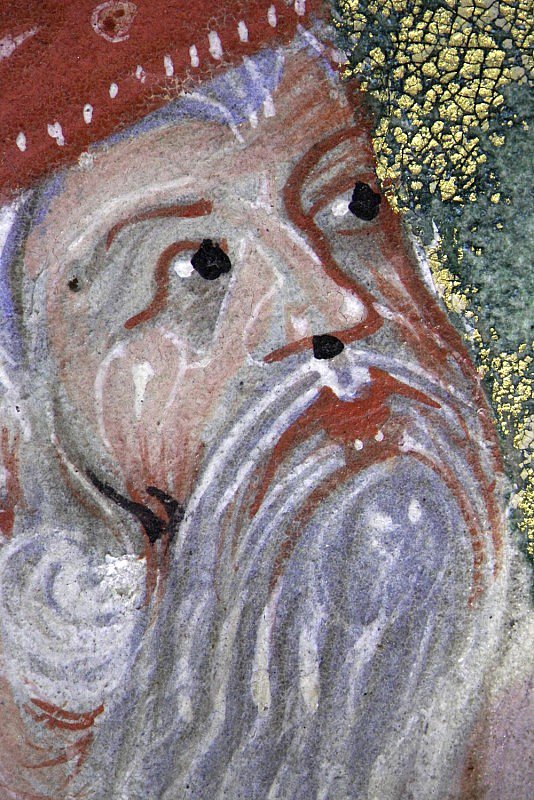Painting the flesh
Artists' Techniques
The materials and techniques used by each of the artists to paint flesh tones are amongst their most characteristic traits. Hands A, B, C and D all painted a blue base layer for flesh tones with woad, which is one of the most distinctive features of the decoration. The subsequent pink surfaces, red outlines and white highlights were applied as distinct layers. This is especially visible in the figures painted by Hand C, whose facial features are angular and exaggerated.
The Gaibana Master used earth pigments in flesh tones, which have a greenish rather than blue undertone. His Associate employed large amounts of azurite instead. The careful blending of paint layers by both artists results in much smoother modelling of faces compared to that found in faces painted by the other illuminators.

Adoration of the Magi
The monumental figures and elaborately tooled gold halos are characteristic of Hand A’s work. The composition betrays his collaboration with – or knowledge of works by – the Master of Giovanni da Gaibana, as it is closely related to the Gaibana Master’s painting of the same subject in the Paduan Epistolary.
Related content: Lab
- Overview of Artists' Materials: Gold
- Overview of Artists' Materials: Indigo and Woad
- Overview of Artists' Materials: Ultramarine
- Overview of Artists' Materials: Verdigris
- Analytical Methods: Near-infrared imaging
- Analytical Methods: Optical microscopy
- Overview of Artists' Techniques: Painting with metals
